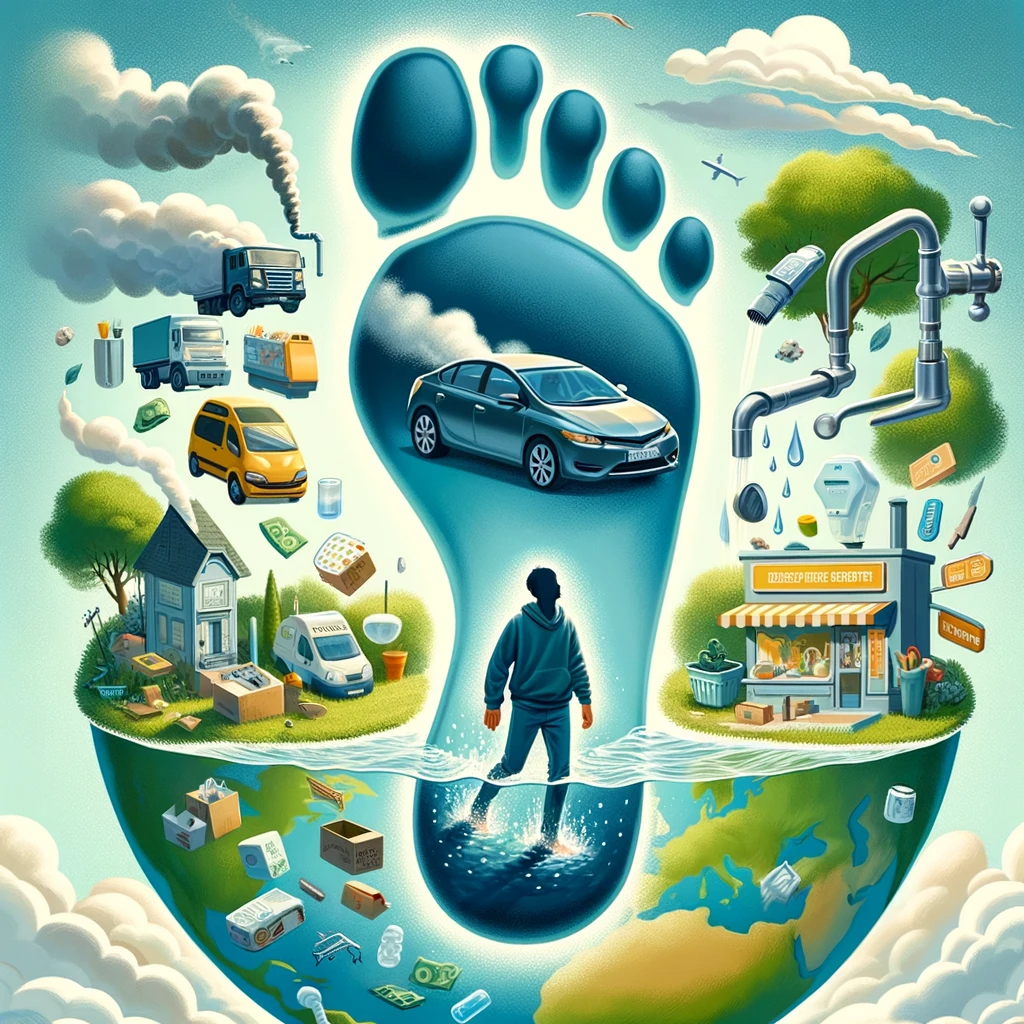An individual’s carbon footprint refers to the total amount of greenhouse gases, including carbon dioxide and methane, that are emitted directly or indirectly as a result of their activities. It’s a measure of the impact a person’s actions have on the environment in terms of the amount of greenhouse gases produced, measured in units of carbon dioxide equivalents (CO2e).
Here’s a breakdown of the various components that typically contribute to an individual’s carbon footprint:
- Transportation: This includes emissions from personal vehicles (cars, motorcycles), public transportation (buses, trains), and air travel. The type of vehicle, fuel efficiency, and distance traveled are key factors that determine the emissions from transportation.
- Home Energy Use: This covers the electricity, gas, heating oil, or other fuels used for heating, cooling, and powering appliances and devices in one’s home. The source of the electricity (e.g., coal, natural gas, renewable sources) significantly affects the carbon footprint.
- Diet and Food Choices: The production, transportation, and storage of food all contribute to greenhouse gas emissions. Meat and dairy products, particularly from ruminants like cows, have a higher carbon footprint compared to plant-based foods due to factors like methane emissions during digestion and land use for grazing.
- Goods and Services: The production, transportation, and disposal of goods and services that a person buys contribute to their carbon footprint. This includes clothing, electronics, furniture, health services, and more. The materials used, the manufacturing process, and the lifespan of the product all play a role.
- Waste: The disposal of waste, especially if it ends up in a landfill, can generate methane, a potent greenhouse gas. Recycling, composting, and reducing overall waste can help lower one’s carbon footprint in this area.
An individual’s carbon footprint can vary greatly depending on lifestyle choices, consumption habits, and the region of the world they live in. For instance, someone living in a developed country might have a larger carbon footprint due to higher levels of consumption and energy use compared to someone living in a developing country.
Buy Your Carbon Credits with the Dunans Castle Woodland Offset Scheme


